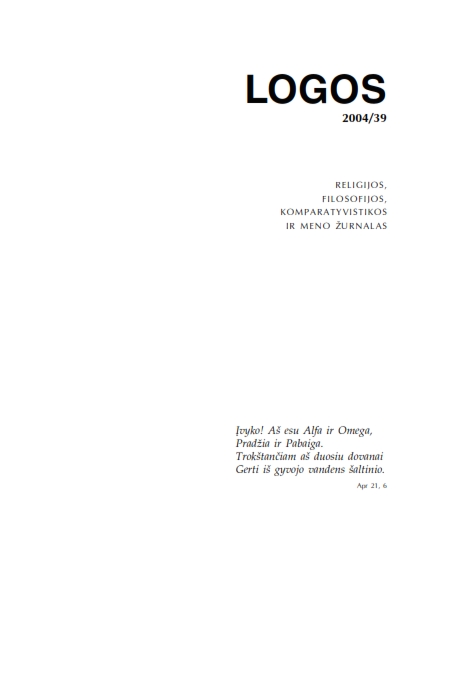Šiapus ir anapus giminės maskarado
Here and Beyond the Gender Masquerade
Author(s): Audronė ŽukauskaitėSubject(s): Gender Studies, Semiology, Social Philosophy, Ontology
Published by: Visuomeninė organizacija »LOGOS«
Keywords: Sexual difference; phallic signifier; gender masquerade; semiotic and symbolic dimensions;
Summary/Abstract: The article discusses the Lacanian definition of sexual difference, which is defined according to the position taken in language: “to be” or “to have” the phallus. This Lacanian “ontology” started an infinite debate about “femininity and the masquerade”. The first reaction is a well-known feminist statement that if the masquerade is the effect of “phallic economy”, we should search for some space beyond the phallic signifier. Julia Kristeva defines this space as semiotic chôra; Lucy Irigaray seeks to invent the non-phallic mode of discourse. The second reaction makes attempts to undermine the distinction between femininity and the masquerade. Joan Riviere states that femininity and the masquerade are the same thing; Judith Butler takes the next step, claiming that every sexual position is performatively constructed. The most radical interpretation is provided by Slavoj Þiþek: he states that in so far as woman is characterized by an original masquerade, she is more subject than man. Is there any need to reassert woman as a subject par excellence, when everyone agrees that the subject doesn’t exist? Mary Ann Doane interprets the masquerade as the resistance to patriarchal positioning, as the denial of the production of femininity as a presence to itself. The effectivity of the masquerade lies in its capacity to create a distance from the image, which is producible and readable by woman herself.
Journal: LOGOS - A Journal of Religion, Philosophy, Comparative Cultural Studies and Art
- Issue Year: 2004
- Issue No: 39
- Page Range: 107-116
- Page Count: 10
- Language: Lithuanian

